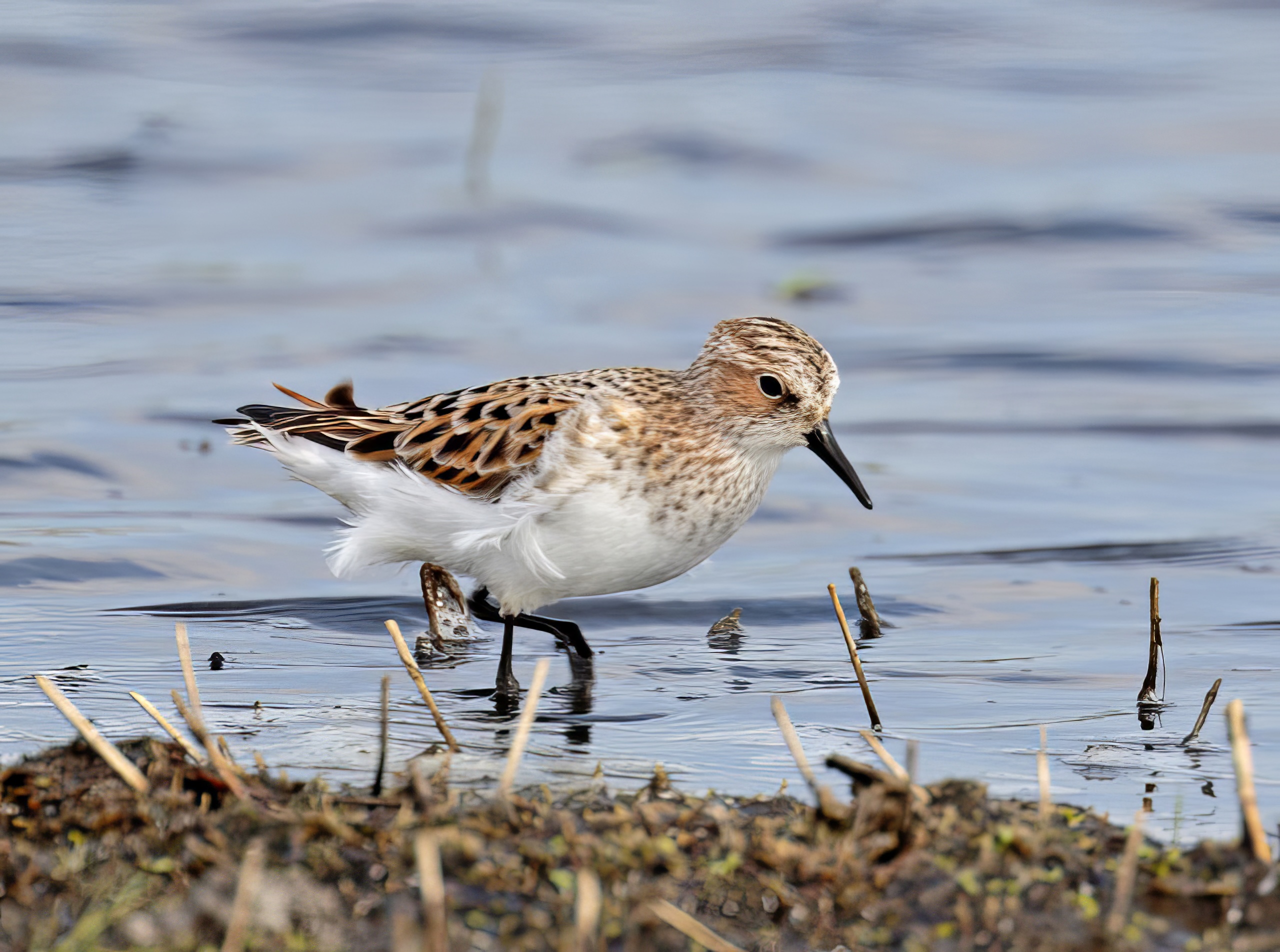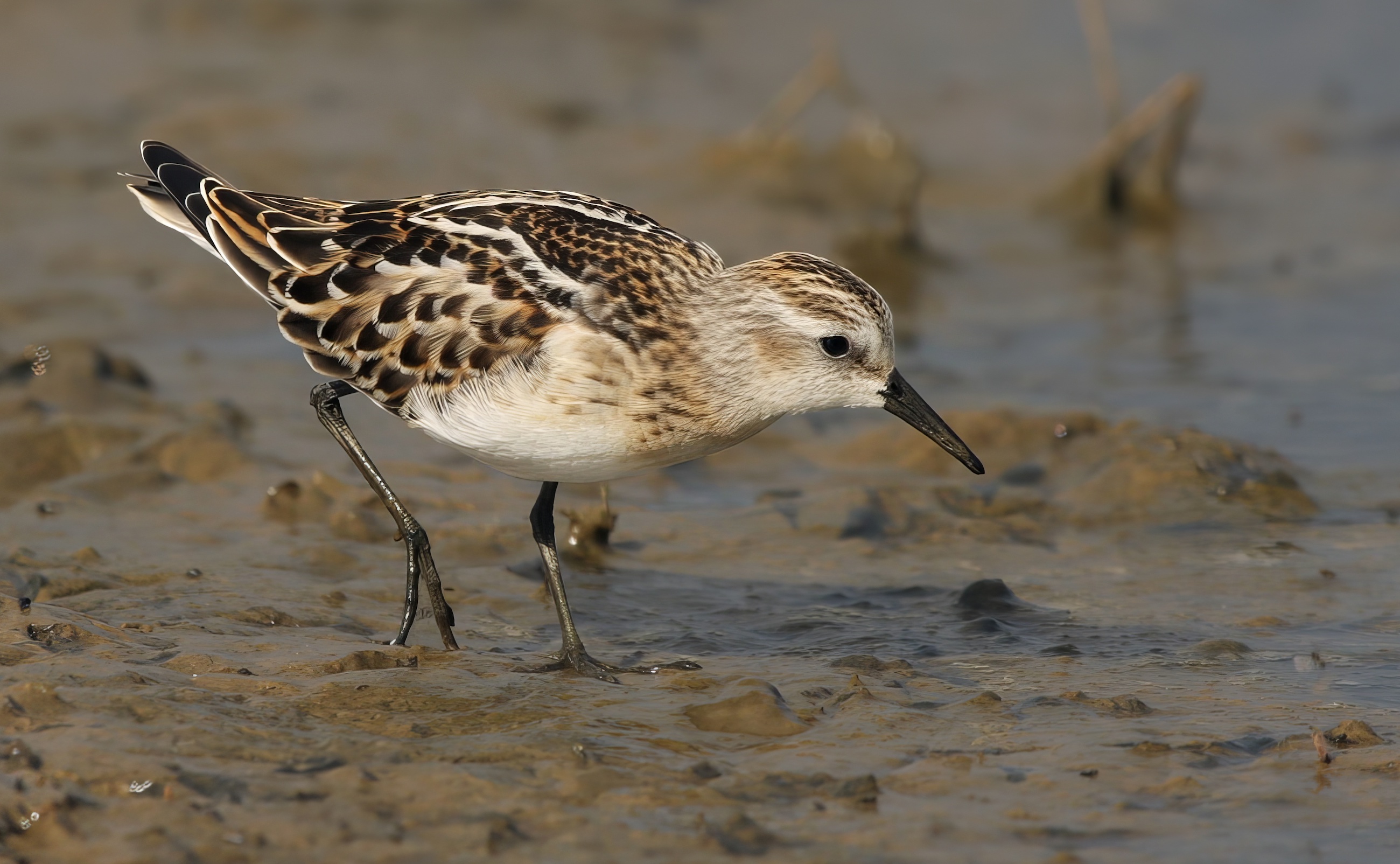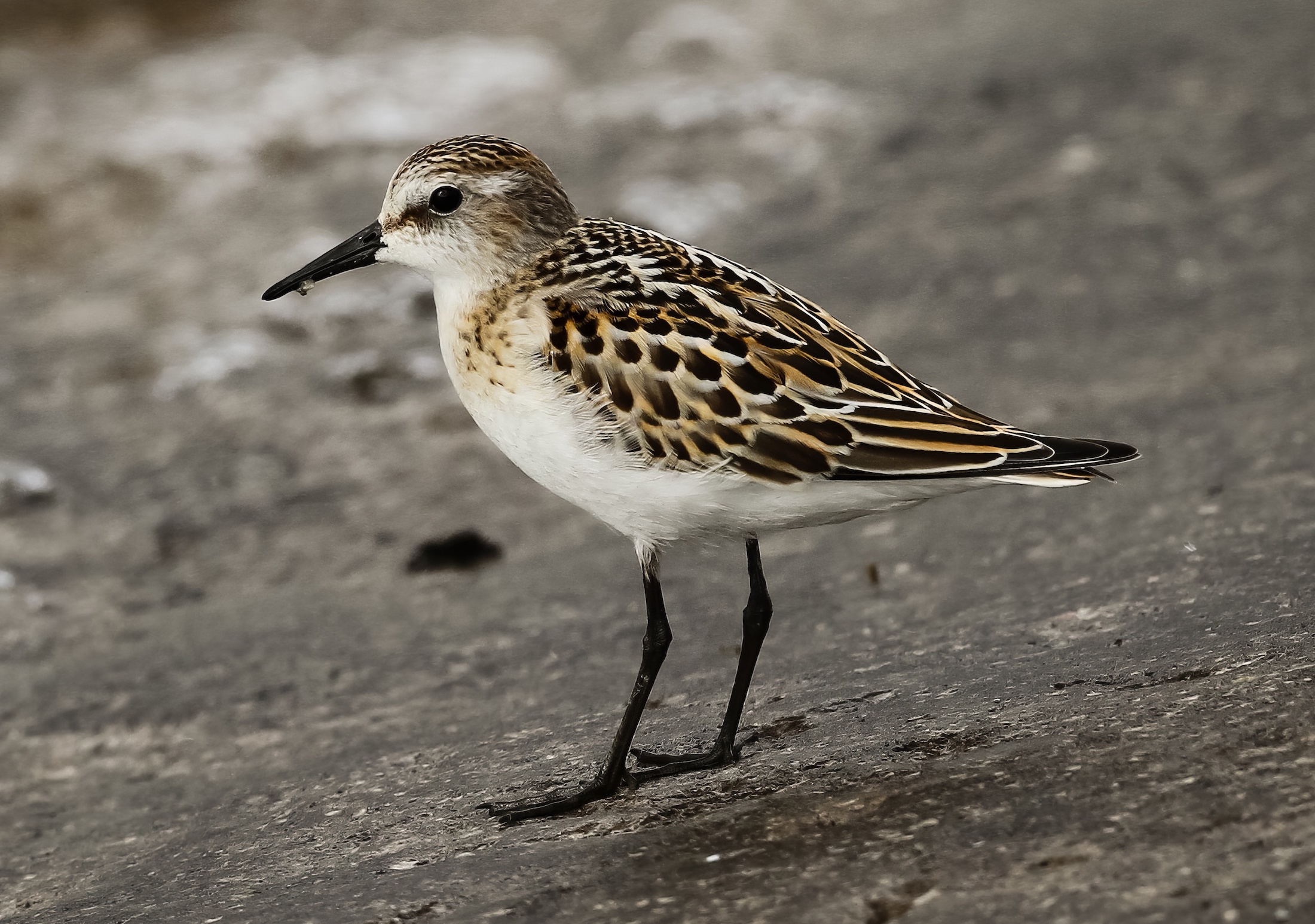Little Stint Calidris minuta
Passage migrant, very scarce in spring and scarce/fairly common in autumn with rare/very scarce winter records.



Little Stints: left, adult summer plumage, north Lincolnshire May 11th 2016 (Graham Catley); centre, juvenile September 2009 Frampton Marsh (Neil Smith);
right, juvenile Covenham Reservoir September 5th 2010 (John Clarkson).
The general feeling is that while Little Stints have increased in winter and in spring, autumn numbers are down. LBR reports show that in the five years to 2018, birds wintered in four years out of five and averaged about six birds per year with none in 2018 and 16 in 2016. Peak spring reports averaged about 10 per year with four in 2014 and 16 in 2015, while peak autumn reports averaged 38 per year ranging from 13 in 2018 to 67 in 2016. The Atlas reported that exceptional influxes of over 100 had occurred in the past but there has been nothing like that in recent years. The largest counts around the Wash have been of 40 at Frampton Marsh on August 28th 2016 and 40 again on September 12th 2022; on the Humber, 15 at Alkborough Flats in September 2015.
As with Curlew Sandpipers, Little Stints show occasional 'invasion' years. One such year was 1996 when several thousands were recorded nationally, peak numbers occurring in September. In that year the top ten sites across the county recorded September peaks of between 10-42 birds, with those seeing 20 or more being Saltfleetby-Theddlethorpe NNR (20), Barton Pits (23), Kirkby GP (28), Toft Newton Reservoir (32) and Covenham Reservoir (42). Note that Frampton Marsh had not come into being in that year, although in a more recent year, 2016, that site recorded 40 on August 28th with 20 still there on September 29th; elsewhere Alkborough Flats saw 15 on September 3rd.
Few Little Stints have been ringed in the county but there are three records of Norwegian-ringed birds being seen or recovered in the county - an adult found dead near Grimsby in September 1949; a colour-ringed bird seen at Freiston Shore in August 2016 having travelled 1,1117 km from the ringing site in three weeks; and another bird colour-ringed in September 2014 seen at Frampton Marsh in August 2019.
(Account as per new Birds of Lincolnshire (2021), included September 2022)
